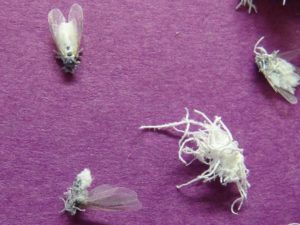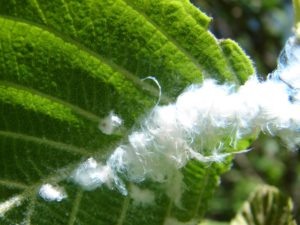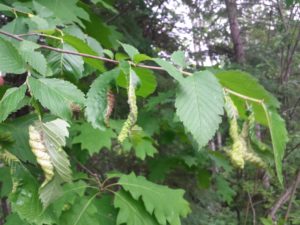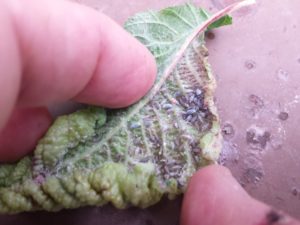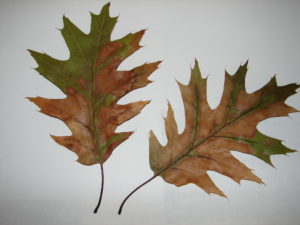
Black canker causes twig mortality and a sunken area on the branch. Photo by Mike Schuessler.
Do you have willow that is looking thin and sad this year? In addition to some frost damage earlier this year, I’ve checked out several areas where black canker and willow scab are causing defoliation and fine branch mortality. I’ve noticed this in Brown, Door, Kewaunee, Marinette, Oconto, and Waupaca counties.
Early in my career with the department I recall checking out a willow planting in Manitowoc County that had a lot of black canker killing the fine branches, but since then I haven’t run into it much. Black canker starts by infecting a leaf but quickly moves into the petiole and into the twig where it causes a small sunken canker. This can cause the twig tip to wilt, shrivel, and die. Willow scab will also cause the twig tips to wilt, shrivel, and die. Willow scab and black canker can often be found affecting the same tree and are more common in years when we have a cool wet spring.
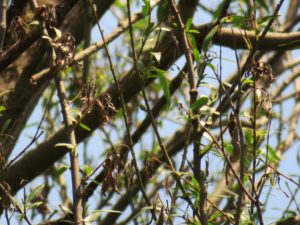
New growth impacted by willow scab and black canker will shrivel and die.
Repeated defoliation of a tree due to black canker or willow scab can significantly impact growth and form because many branch tips will be killed. More information and pictures are available online by Cornell on black canker and willow scab.
Written by: Linda Williams, forest health specialist, Woodruff, (Linda.Williams@wisconsin.gov), 715-356-5211 x232.

